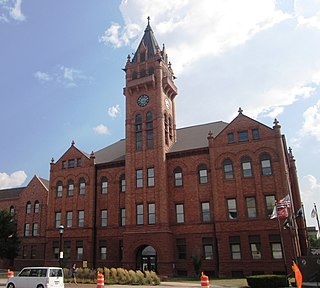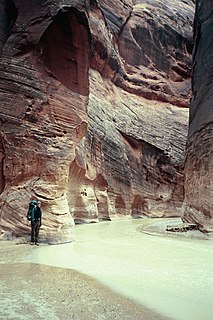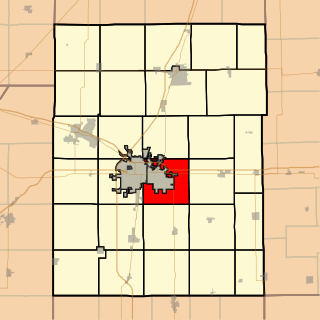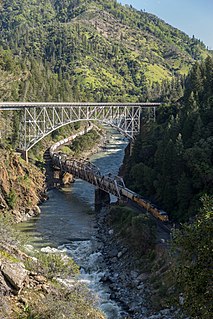| Saline Branch Drainage Ditch | |
|---|---|
| Location | |
| Physical characteristics | |
| Source | |
| - location | Champaign County, Illinois south of Rantoul, Illinois |
| - coordinates | 40°15′59″N88°10′28″W / 40.266358°N 88.17433°W [1] |
| Mouth | |
- location | Confluence with the Salt Fork Vermilion River west of St. Joseph, Illinois |
- coordinates | 40°07′02″N88°03′08″W / 40.1173°N 88.0521°W Coordinates: 40°07′02″N88°03′08″W / 40.1173°N 88.0521°W [1] |
- elevation | 676 ft (206 m) |
| Basin features | |
| Progression | Saline Branch → Salt Fork → Vermilion → Wabash → Ohio → Mississippi → Gulf of Mexico |
| Tributaries | |
| - right | Boneyard Creek |
| GNIS ID | 417889 |
The Saline Branch, or Saline Branch Ditch, is a tributary of the Vermilion River in east central Illinois. [2] It drains a parcel of east-central Champaign County, including most of the city of Urbana, Illinois and the University of Illinois campus within Urbana. [3]

A tributary or affluent is a stream or river that flows into a larger stream or main stem river or a lake. A tributary does not flow directly into a sea or ocean. Tributaries and the main stem river drain the surrounding drainage basin of its surface water and groundwater, leading the water out into an ocean.
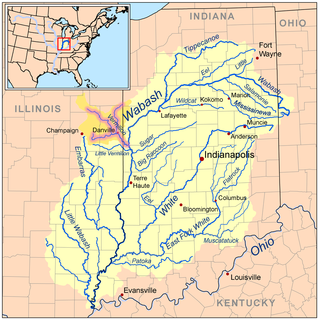
The Vermilion River is a tributary of the Wabash River in the states of Illinois and Indiana, United States.

Illinois is a state in the Midwestern and Great Lakes region of the United States. It has the fifth largest gross domestic product (GDP), the sixth largest population, and the 25th largest land area of all U.S. states. Illinois is often noted as a microcosm of the entire United States. With Chicago in northeastern Illinois, small industrial cities and immense agricultural productivity in the north and center of the state, and natural resources such as coal, timber, and petroleum in the south, Illinois has a diverse economic base, and is a major transportation hub. Chicagoland, Chicago's metropolitan area, encompasses over 65% of the state's population. The Port of Chicago connects the state to international ports via two main routes: from the Great Lakes, via the Saint Lawrence Seaway, to the Atlantic Ocean and from the Great Lakes to the Mississippi River, via the Illinois Waterway to the Illinois River. The Mississippi River, the Ohio River, and the Wabash River form parts of the boundaries of Illinois. For decades, Chicago's O'Hare International Airport has been ranked as one of the world's busiest airports. Illinois has long had a reputation as a bellwether both in social and cultural terms and, through the 1980s, in politics.
Extensive engineering work from the late 1800s through the early 1900s, completed in 1908, straightened and ditched the once-wandering creek. It discharges into the Salt Fork of the Vermilion River; the discharge includes outflow from the Urbana-Champaign Sanitary District. The U.S. Geographic Names Information System (GNIS) states an alternate name for this stream is West Branch Salt Fork. [2]
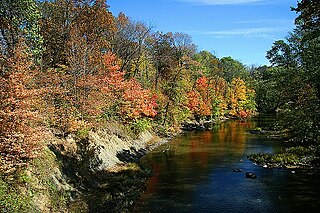
The Salt Fork is a tributary of the Vermilion River located in Illinois.

The Geographic Names Information System (GNIS) is a database that contains name and locative information about more than two million physical and cultural features located throughout the United States of America and its territories. It is a type of gazetteer. GNIS was developed by the United States Geological Survey in cooperation with the United States Board on Geographic Names (BGN) to promote the standardization of feature names.

